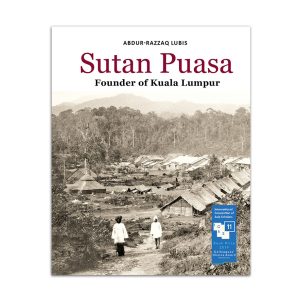For those who want to know all there is about the sape, one of Sarawak’s most iconic traditional instruments, they can take a chapter from Alat Muzik Tradisional Sarawak: Sape a new book launched during the World Harvest Festival (WHF) 2016 held at the Sarawak Cultural Village (SCV).
This book will explore the stringed instrument’s origin, how it is made as well as how it has evolved. It also includes Sape makers and players who have made their mark and are known globally.
SCV music arranger and composer Narawi Rashidi, Unimas music lecturer Connie Lim Keh Nie, and sape activist and instructor from ‘Sape Star’ Saufi Aiman Yahya co-wrote this book published by Dewan Bahasa dan Pustaka (DBP).
“We must praise the co-authors of ‘Alat Muzik Tradisional Sarawak: Sape’ for their determination and effort in gathering relevant information on the Sape’ including its legends and art activists. It will surely become an important reference for future generations,” said Pantai Damai assemblyman Dr Abdul Rahman Junaidi during the launch.
He hoped that cultural music and the like could be incorporated in school curriculum as early as primary school to enrich the lives of the younger generation and prevent them from being heavily influenced by foreign cultures and social values.
Abdul Rahman quoted P Ramlee: ‘Anak-anak merupakan seperti kain putih, jiwa mereka kosong, jika kita tidak menanamkan ilmu agama atau seni budaya tempatan, suatu hari nanti, budaya asing akan mengambil tempat di hati mereka.’ (Children are like white cloth, their souls are empty, if we do not instil religious knowledge or arts of local cultures, someday, foreign cultures will take place in their hearts.)
“A lot of foreign cultures exist in our country. Therefore, the Sarawak Cultural Village, Dewan Bahasa dan Pustaka and several other agencies related to arts and education must enhance their efforts in elevating the local cultures and arts.
“We also hope that the DBP will continue to support the efforts of documenting Sarawak cultures, and SCV that has won several awards locally and internationally for being a leading organisation in the preservation and promotion of arts and culture to continue to excel in the national and international art,” he added. (Originally published in The Borneo Post, 4 May 2016)
Editorial Reviews
Buku ini berjaya memaparkan sape bukan sahaja sebagai alat muzik Orang Ulu, tetapi lebih daripada itu. Sape mempunyai kedudukan yang istimewa dalam masyarakat Orang Ulu sehinggakan sape sinonim dengan Orang Ulu. Kedudukan dan peranannya menjadikan sape sebuah alat muzik yang unik. Jadi, buku ini seharusnya dimiliki bukan sahaja oleh Orang Ulu tetapi juga para pencinta budaya tradisional masyarakat. Sememangnya buku seperti ini amat perlu dalam menempuh gelombang perubahan budaya agar elemen penting berkaitan budaya warisan tidak lupus ditelan zaman.
― Profesor Hashim Awang AR, mantan Pensyarah Program Pengurusan Seni, labatan Seni Liberal, Fakulti Seni Gunaan dan Kreatif, Universili Malaysia Sarawak
Penghasilan buku ini merupakan satu usaha yang amat baik ke arah memperkenalkan alat muzik tradisional Sarawak, iaitu sape khususnya kepada masyarakat Malaysia. Buku ini mudah difahami dan amat komprehensif untuk dijadikan sebagai panduan dan rujukan dalam kalangan pelajar, amatur dan profesional demi kecemerlangan industri muzik tradisional di Malaysia. ― Encik Mohd. Yazid Zakaria, Konduktor Orkestra Tradisional Malaysia, lstana Budaya







